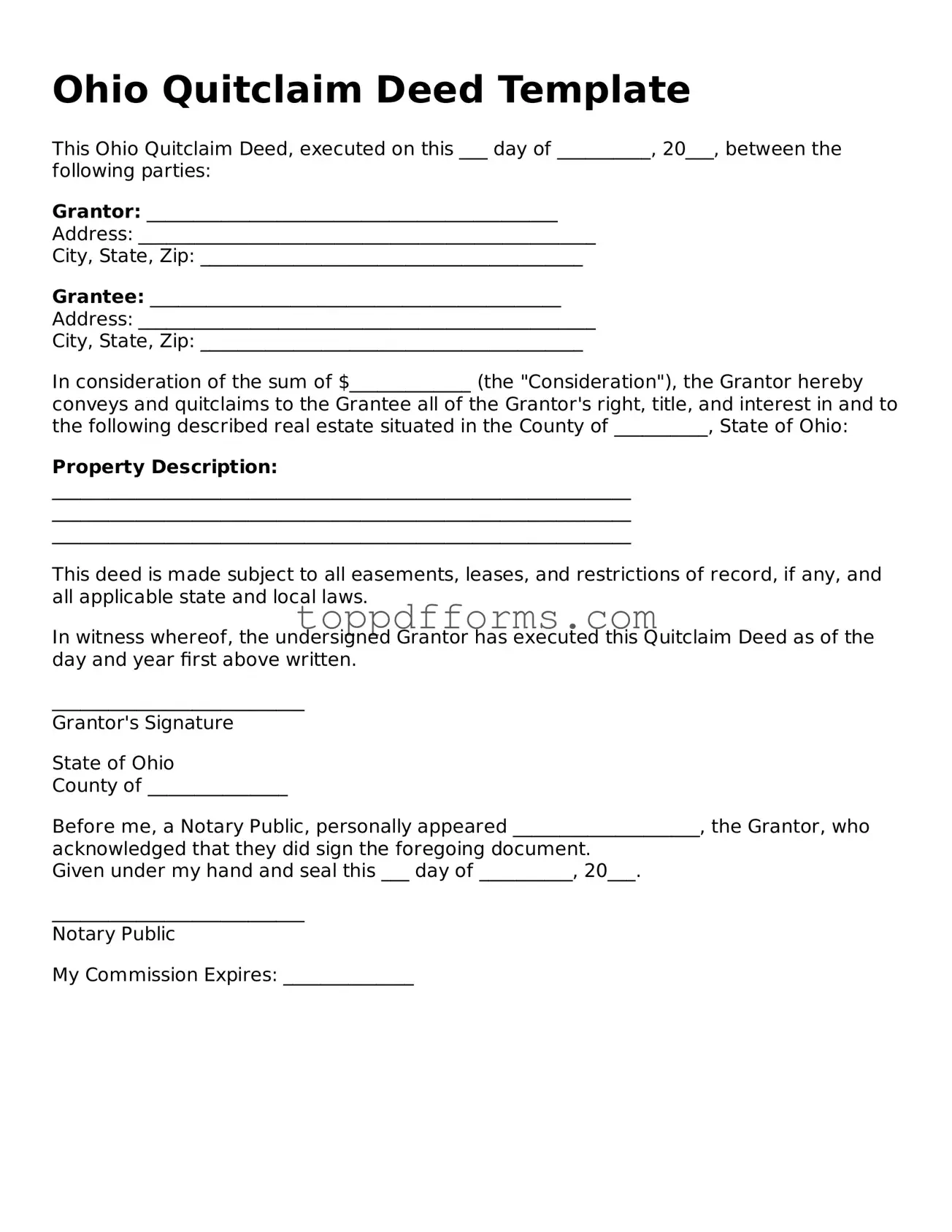What is a Quitclaim Deed in Ohio?
A Quitclaim Deed is a legal document used to transfer ownership of real estate from one person to another in Ohio. Unlike other types of deeds, a Quitclaim Deed does not guarantee that the person transferring the property has clear title. Instead, it simply conveys whatever interest the grantor has in the property, if any. This makes it a common choice for transferring property between family members or in situations where the parties know each other well.
When should I use a Quitclaim Deed?
You might consider using a Quitclaim Deed in several situations. Common scenarios include transferring property between family members, adding or removing a spouse from the title after marriage or divorce, or transferring property into a trust. Since this deed does not provide warranties, it is important to ensure that both parties are aware of the property’s title status.
How do I complete a Quitclaim Deed in Ohio?
To complete a Quitclaim Deed in Ohio, you need to provide specific information. This includes the names of the grantor (the person transferring the property) and the grantee (the person receiving the property), a legal description of the property, and the date of the transfer. After filling out the form, the grantor must sign it in the presence of a notary public. Notarization is essential for the deed to be legally valid.
Do I need to file the Quitclaim Deed with the county?
Yes, after completing the Quitclaim Deed, it must be filed with the county recorder's office where the property is located. Filing is important as it provides public notice of the transfer and protects the rights of the new owner. There may be a small fee associated with filing, which varies by county.
Is a Quitclaim Deed the same as a Warranty Deed?
No, a Quitclaim Deed is not the same as a Warranty Deed. A Warranty Deed provides a guarantee that the grantor holds clear title to the property and has the right to transfer it. In contrast, a Quitclaim Deed makes no such guarantees. It simply transfers whatever interest the grantor may have, without any assurances regarding the title's status.
Are there any tax implications when using a Quitclaim Deed?
Yes, there can be tax implications when using a Quitclaim Deed. While transferring property between family members may not trigger immediate tax consequences, it is important to consider potential gift taxes or property taxes. The grantee may also face reassessment of property taxes based on the transfer. Consulting with a tax professional can help clarify any specific concerns.
Can I revoke a Quitclaim Deed after it has been executed?
Once a Quitclaim Deed has been executed and recorded, it cannot be revoked unilaterally. However, the grantor and grantee can agree to reverse the transaction by executing a new deed. This new deed would typically transfer the property back to the original owner. It is advisable to consult with a legal professional to ensure that the process is handled correctly.
